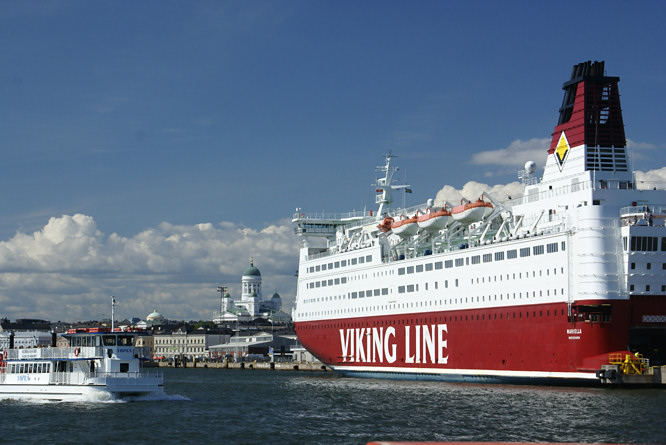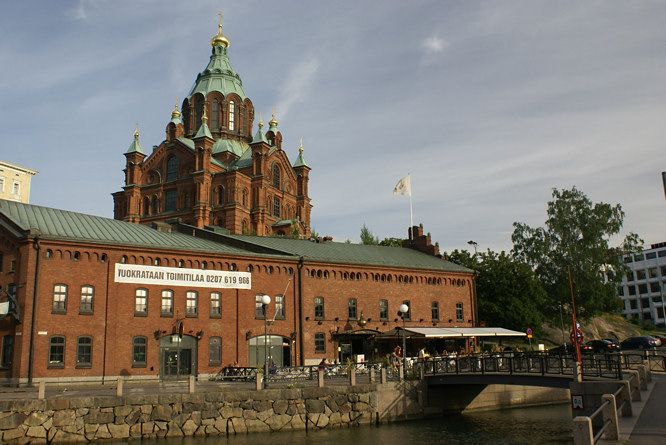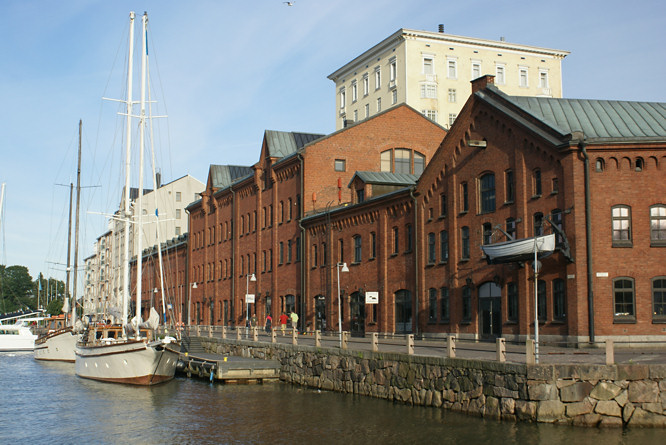Finland and Helsinki - The European newcomers
Finland is a country of approximately 5.2 million people with about 560,000 of them residing in Helsinki. Helsinki is the capital and largest city in Finland. Helsinki is situated on the south coast of Finland. Founded by King Gustaf Vasa of Sweden in 1550, the city of Helsinki was initially a small fishing town until 1812 when it was 'modernized' under Russian rule and turned into the administrative capital of the Autonomous Grand Duchy of Finland.

Finland has been a Sovereign parliamentary republic since 1917. About 92% the population speak Finnish, while only 6% speak Swedish. Signs and most definitely maps frequently are written in both Finnish and Swedish. I feel quite foolish about just recently understanding that 'Helsingfors' means Helsinki in Swedish.
The city's nightlife is pacing and several bars have reached worldwide fame such as The Ice Bar and DTM. For shopping Stockmann is highly recommended with a wide range of all most everything ultra-technological can be bought among with authentic Finnish souvenirs. Many other good department stores can also be found but don't be surprised if the prices are quite high. There are also several open air markets during the summertime where copious amounts of new and old merchandise can be purchased.
The climate in Helsinki varies on what season you visit: in winter the city is usually swept under a layer of snow and temperatures can drop as low -25° C. However in the summer the climate is relatively warm and the sky is blue and temperatures usually reach an average of 20° C but even temperatures frequently rise up to 25° C or as low as 9° C
Unlike most of the surrounding Scandinavian countries, Finland has adopted the Euro as their unit of currency (EU - European Union). Finland adds a VAT (Value AddedTax) to the sales price of goods. If you live outside of of the EU countries and Norway, and you spend 40 Euros or more in one store, you can recover the money charged as VAT. Present the merchandise and sales receipt (s) at the appropriate office in the airport.

Or, present your cruise card or passport for identification before reboarding your ship, and ask for the appropriate 'Global Refund Check' which you can cash on the pier or receive a credit on your credit card account. The refund is between 10 - 16% of the purchase price. Most shops are open from 9am to 9pm; open-air markets 8am to 8pm with some closing for about 2 hrs. 2pm to 4pm. Many Finns speak excellent English.
Bicycling and roller blading are popular activities. Hire is available. Try to get a free bike/skate city map from tourist office. The city offers several swimming pools. The best one is the Itakeskus underground swimming hall, with a gym, saunas as well as several pools. Finns have passion for saunas, so you should try one. Nude bathing is commonly accepted and there are nudist area on some island beaches. e.g. the western edge of Seurasaari.

A brief history of Helsinki
The Vikings of Finland explored the rivers of Russia and north Eastern Europe rather than attack Britain, France, and Holland like the Vikings of Norway and Denmark. They even got as far as the Black Sea. The Russian word for the Viking around the Baltic sea was Rus. A number of these Rus Vikings invaded then settled in these lands and ruled over the local slavic tribes. This is possibly the origin of the word Russia, land of the Rus or land of the Baltic Vikings. The first mention of a parish of Helsinki (Helsinge) concerns to 1351 when monks of an Estonian monastery received rights on fishing salmon in this district. The central part of this settlement with a church was in the territory of the modern city of Vantaa.
The city of Helsingfors (the Finnish capital is named so in Swedish) was founded in 1550 by the Swedish king Gustav Vaza on a place of a small fishing port. Gustav Vaza wanted it compete to Revel (nowadays Tallinn, the capital of Estonia). Originally Helsinki settled down in a mouth of the river Helsinge (Helsinge, nowadays - Vantaanjoki), about 5 km to the north of the present city center where now there is an area Vanha-kaupunki (Vanhakaupunki, i.e. Old city). The name of the settlement Helsin-ge-Fors founded by Swedes (Helsinge Fors) in translation from Swedish meant 'Thresholds on the river Helsinge'. However the city remained small for a long time.
When in 1561 Swedes won Revel (Tallinn) this small Finnish city lost its value at all. The well-known Swedish general-governor Per Brage advised to carry the city close to the sea. In 1640 the city moved to the south - on the cape Vironniemi (Vironniemi, modern area Kruununhaka, Kruununhaka, near to the city centre). This place is more accessible from the sea. However the city still badly developed, suffering from different misfortunes.
Helsinki after the great famine in 1697 it was devastated with a plague in 1710. In 1713 during the Northern war the city was reduced to ashes by Swedes receding from Russian armies. There were only ruins, and the population was reduced up to 150 persons. In 1721 the city again passed under the authority of Swedes. Its revival was interfered by attacks of Russian armies in the end of XVIII century.
In 1748 Swedes constructed the sea fortress Sveaborg, nowadays Suomenlinna, on small islands of Wargskaren and the city became more protected from the sea. It was a turning point in history of Helsinki: the construction of a fortress on Baltic drew attention to the port. The city began to grow rich, trade and seafaring began to extend.
As a result of war 1808-1809 Finland became a part of Russia as the Great princedom, and Helsinki became its capital. During the Russian-Swedish war 1808-1809 the city was again reduced to ashes. But in 1809 Finland was attached to Russia and after that fast development of Helsinki began.
In 1812 after the grandiose fire which devastated the city of Turku (Abo), the Russian tsar Alexander I carried to Helsinki the capital of the Great princedom Finnish. After that the population of the city became fast grow from 4 thousand in 1810 up to 60 thousand in 1860. The city began develop even more quickly after a construction of railways Helsinki - Hamenlinna (1862) and Helsinki - St.-Petersburg (1870). The population of Helsinki already achieved 80 thousand by the end of the XIXth. In December of 1917 Finland proclaimed independence from Russia. After a short civil war conditions was stabilized, and in 1919 the parliament of Helsinki choose the first president of Finland. (in 2000 it choose it's first female president)
In 1939 Germany and the Soviet Union sign a 'non-aggression' treaty in case there might be war. The Soviet Union is granted "rights" to Finland and the Baltic countries. As Hitler invades Poland, Stalin attacks Finland and the Finnish people suffer greatly during the Winter War. The Russians fail to conquer Finland. In 1941 Finland in turn launches its own war against the Soviet Union with the help of Hitler who has now turned against the Russians. In 1943 when Stalingrad falls to Germany Finland begins peace negotiations with the Soviet Union. Finland hosts the Olympic Games in 1952 and joined NATO in 1994. In 1999 Finland joins the European Union and eventually the Euro is adopted for currency.
Travel books

